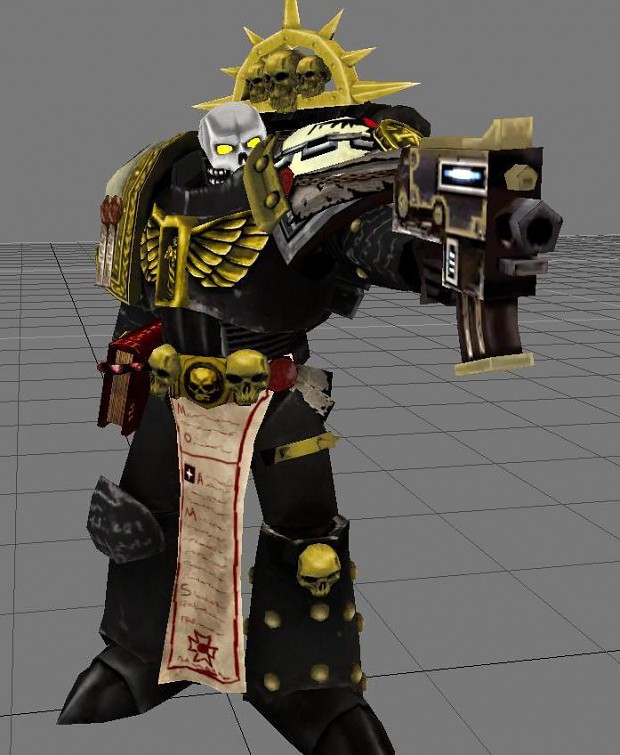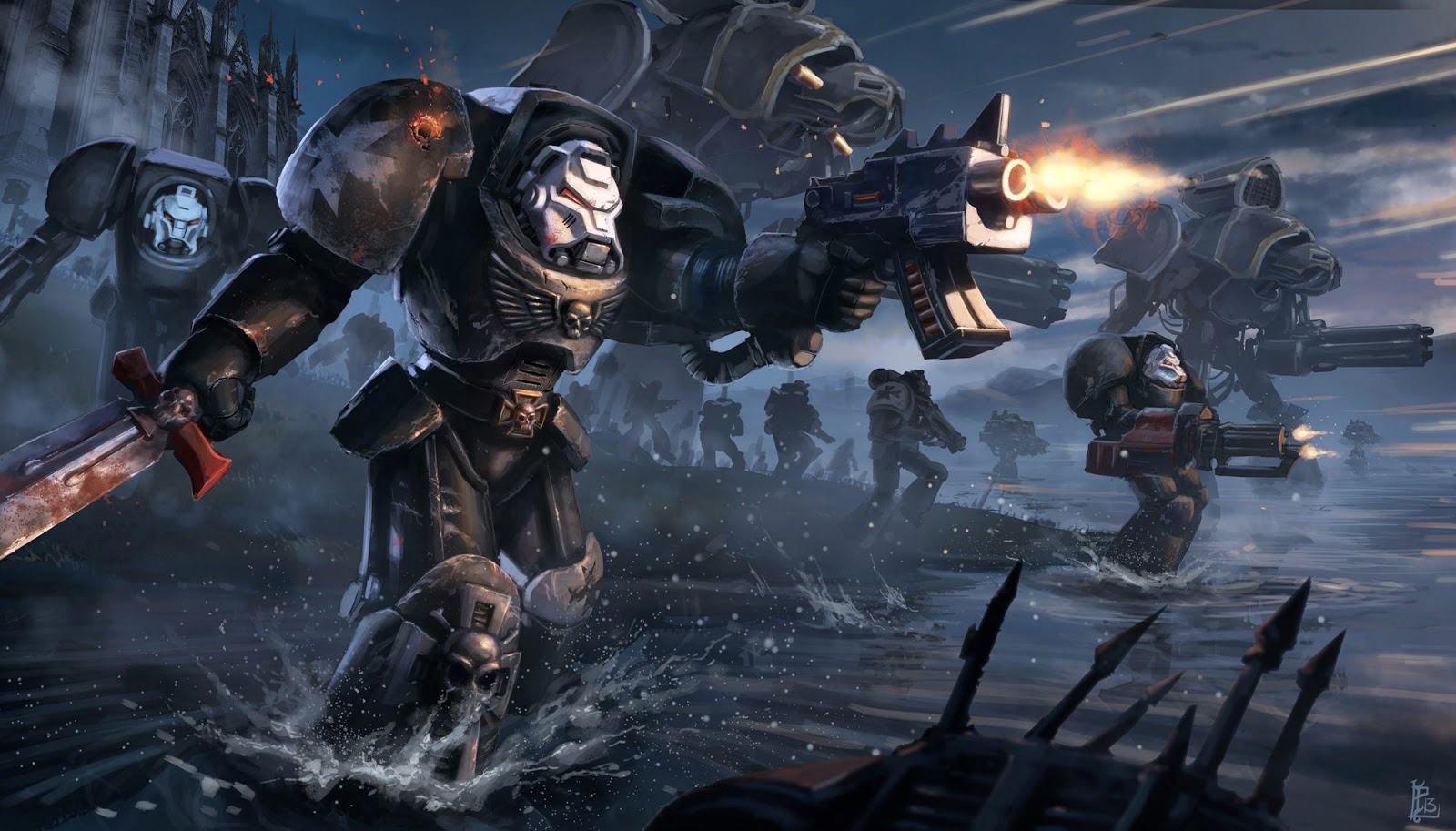Terminator Armor Dawn Of War 2
La fonte des neiges (2009 bluray torrent. Click the yellow ' Download' button on the right to download the.torrent files directly from the indexed sites.



Dawn Of War 2 Terminator Armor
Terminator Armour – Sometimes referred to as Tactical Dreadnought Armour, Terminator Armour grants its wearer tremendous protection and allows them to hold weapons in one hand that they would struggle to hold with two even whilst in Power Armour. Only those who have been granted the Crux Terminatus may wear the armour for it is as much a relic of the Chapter as it is a powerful weapon or war, for if the stories are true each suit of armour contains a sliver of the armour that the Emperor.
By Shawn Oaks
Build your base, order your troops, and command them in the field of battle. It's been the standard operating procedure of the real-time strategy genre since Dune II cemented the foundation. Now with Warhammer 40,000: Dawn of War II, Relic has smashed apart a major pillar of the RTS formula by eliminating base building. In its place have been fused elements of role-playing games, whereby the squads you control in each of the campaign carry over mission to mission, grow, and evolve according to what gear you decide to equip and what skills you decide to improve. The notions of persistence introduced in the expansions to the original Dawn of War have been expanded, the cover system and destructible environments from Company of Heroes imported, and the capture point mechanic for resource acquisition built in and simplified for the skirmish mode. It's a game that, like Massive Entertainment's World in Conflict, slices the strings that bind genre entries to tradition, and in the process emerges as something as strange as it is familiar, that sometimes stumbles in its newness but still manages to find its footing.
The game is divided into a campaign mode and skirmish mode, all of which feature multiplayer. In the campaign, Relic gives you the option to play cooperatively, with those participating working together to vanquish the enemy, though it's only the host who reaps the persistent rewards. In the skirmish mode, you can participate in 1 versus 1 or 3 versus 3 matches online with others or against AI-controlled opponents of several difficulty levels using Tyranid, Eldar, Space Marine, or Ork armies.
Video Review - Watch or download the video here (HD available).
In the campaign, you'll play strictly as the Space Marines, and though both modes illustrate Relic's move to eliminate base building, the campaign is the more obvious example. Instead of constructing a linear, mission-to-mission campaign, Relic has opted for an reworked version of the persistent campaign map that showed up in the Dark Crusade and Soulstorm expansions to Dawn of War. This time there's a far greater narrative element that's woven into the action. As a newly promoted Force Commander for the Blood Ravens chapter of the Space Marines (genetically altered superhuman soldiers) you'll battle against the Eldar, Orks, and menacing Tyranids to save your home planets.
Aboard the starship Armageddon you'll only ever amass six squads throughout the campaign, and you'll never build a unit-producing structure; you only capture relays and buildings to reinforce squads and net other bonuses. It's up to you which four squads to bring into any mission, as well as how to equip them. Unlike real-time strategy games past where each unit has a specific function with a few ways to differentiate through research upgrades, Dawn of War II lets you gradually accrue an assortment of wargear throughout the campaign that can dramatically affect functionality. Collected as a reward for completing a mission or dropped from enemies killed in the field, wargear consists of new armor sets, weaponry like chainswords, power axes, and heavy bolters, as well as a large number of accessories like melta bombs to smash up vehicles or Terminator armor-mounted missile racks for annihilating structures.
In between every mission you can swap out bits of equipment, so if you're tired of your Force Commander charging into fights with a power sword, slap on that set of Terminator armor from your inventory. Now your armor is boosted and you can crush the cover the enemy is using just by walking through it. Equip the fancy teleporter unit you just picked up from the last mission and drop in that Thunder Hammer and Storm Shield and now you're a melee powerhouse capable of blinking directly into entrenched enemy positions, crushing a few faces, then blinking right back out to safety, ideally before the orbital strike you just called down using an equipped beacon accessory purges the area of the living.
Contributing to the versatility of each squad is not only the wargear and accessories but individual abilities, something that can expanded upon by investing points as squads level up. By killing enemies in missions, completing assignments, capturing structures, and recycling unwanted equipment experience points are gained. Upon leveling up, skill points are allocated to that unit to be distributed however you see fit, and with the units' progress capped at level 20, you can't max every skill bar. If you don't care about your Dreadnought's ranged abilities, then you can skip adding points to the ranged skill bar and focus on melee. As points are added into the skill bars new abilities get unlocked as the overall category is strengthened, similar to Mass Effect's system, meaning there'll be abilities you never see on your first time through. In this way, Relic makes multiple playthroughs more worthwhile, even after you know the story.
Power up your squads, equip new gear, break some faces.This kind of fully-integrated equipment swapping and skill set management is pretty strange for the real-time strategy genre; it's something to be expected more from titles like Diablo or Titan Quest. Yet here it works really well, making for a steady stream of rewards and establishing a connection with your individual units more effectively than the limp dialogue of the story sequences. Instead of thinking of squad leader Tarkus as the respected elder of the bunch, you're more likely to think of him as the guy who's carrying your med kits, melta bombs, and frag grenades. Unless you're a sucker for anything Warhammer 40K, this narrative and the way it's presented likely isn't going to draw you in, shifting the focus to how the game plays, which in this case happens to be really well.
From your starship you'll float between three planets, selecting missions of critical narrative importance or side-missions. It's a flexible system, allowing for wins and losses, and in some cases, should all your squads die, closing off a mission for good. If successful, each mission provides a reward, and after each performance you're rated on the number of enemies you wiped out, how many of your squads survived without requiring a revive, and how quickly your tasks were completed. Even on the longer missions, an outing rarely lasts longer than 15 minutes unless you're being extra careful or have the difficulty cranked up above the default level (which I recommend doing), and during that time you'll dig into some excellent tactical gameplay.
For instance, should you toss a grenade to blow apart enemy cover or jump in your assault troops to land on enemy heads as you pick apart those who get tossed around with sniper shots? Or maybe sneak in your scout troop and throw a satchel charge at that tower the enemy garrisoned to blast it to bits before charging in your Dreadnought walker while your heavy bolter lays down suppressing fire? Making these kinds of decisions and the number of options given to players for implementing a range of battle plans helps to keep things interesting as the campaign progresses.